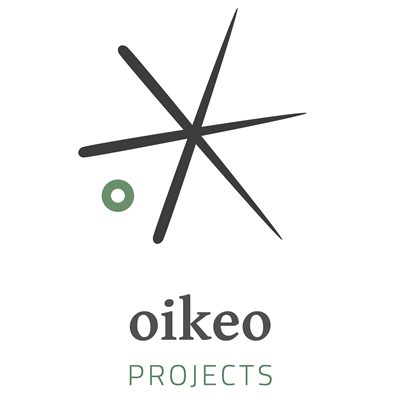

13.10.2015
San Blas, eine Inselgruppe in der Karibik vor der Küste von Panama, ist so schön wie man es sich nur vorstellen kann: Hunderte kleine Inseln, weisser Sand, Kokosnusspalmen, türkisfarbenes Wasser, freundliche Einheimische und das alles auf einem alten knatternden Segelschiff. Wir sind begeistert.
Panama Stadt zu verlassen stellt sich als eine Herausforderung dar: Die elenden Autobahnkreuze sind schwierig zu navigieren. Die Ausfahrten sind nicht angeschrieben - oder auf jeden Fall nicht mit sinnvollen Angaben. Wir machen eine Ehrenrunde durch den Busbahnhof, uns wird es zu bunt und wir stechen über Schotter und Wiese auf die Richtige Strasse. Den Frechen gehört die Welt.
Unser Boot ankert in einem kleinen Fischerdorf namens Carti. Schon die Fahrt dorthin ist spannend. Sobald wir den Panamerikanischen Highway verlassen beginnt das Abenteuer. Eine enge Strasse geht steil in die Hügel hoch, steiler als der Weissenstein in der Schweiz und wohl auch steiler, als wir bisher gefahren sind. Enge Kurven, hoch und runter, es ist eine beachtliche Herausforderung. Dem schlimmsten, nämlich dass ein Auto vor uns in der Kurve bremst, können wir mit kurzen Pausen aus dem Weg gehen, umzufallen wäre da wohl unvermeidbar gewesen. Wir nehmen uns Zeit.
Die Kuna Yala sind die lokale Gruppe Einheimischer. Sie haben sich kurz nach der Jahrhundertwende eine autonome Region erkämpft. Das bedeutet für uns, dass wir an einem Strassenposten eine Kunataxe bezahlen müssen um rein zu dürfen. Das machen wir. Grundsätzlich unterstützen wir Unabhängigkeitsbewegungen. Zuoberst auf einem Hügel reicht die Aussicht so weit, dass wir bereits das Segelschiff in einer etwa 15km weiten Bucht erkennen können.
Auf dem Weg treffen wir bereits mehrere Motorradreisende, die alle auf das selbe Boot wollen. Im Hafen stehen sie dann auch schon auf dem Pier. Am Ende des Tages sind 19 Motorräder auf Deck der Stahlratte, so heisst das Segelboot, vertäut und wir, 23 Reisende, verbringen die Nacht auf einer nahe gelegenen Insel in einem lokalen Guesthouse. Wir geniessen das Wasser, die Sonne und die Gemeinschaft. Alle Reisenden haben eine ähnliche Grundeinstellung zum Leben, was wahrscheinlich auch notwendig ist um mit dem Motorrad monatelang unterwegs zu sein. Wir verstehen uns alle bestens. In der Gruppe hat es US-Amerikaner, Kanadier, Briten, Deutsche, Schweizer, Italienier, Franzosen, Spanier, ein Rumäne und ein Türke. Am nächsten Morgen kommt das Motorboot zurück und bringt uns zur Stahlratte, unser Zuhause für die nächsten Tage.
Die Behörden stempeln unsere Pässe, erledigen die Formalitäten für die Motorradausfuhr während wir bequem auf dem Schiff „am sünnele“ sind. Das einzige was fehlt ist der Wind. Schlussendlich schlängeln wir uns mit dem Motor durch die Inseln, eine schöner als die andere. Erstaunlich viele sind bewohnt, dicht mit simplen Hütten besiedelt, aus einem Baumstamm gefertigte Kanus sind die Fortbewegungsmittel der Wahl. Wir legen Anker bei einer besonders schönen Inselgruppe. Am Abend gibt es BBQ am Strand. Den nächsten Tag verbringen wir die ganze Zeit vor Anker. Schwimmen, sinnieren, essen und schlafen sind die Haupttätigkeiten des Tages. Frischer Hummer, Barrakuda, die Crew hat ebenso gerne gutes Essen wie wir alle. Besonders schön ist die Aussicht vom Crowsnest. Von fast zuoberst des grössten Mastes sieht man 25m über dem Meer wie klar und wie schön farbig das Wasser wirklich ist. Nur runterspringen darf man leider nicht... Ein ganz besonderes Erlebnis ist es, wenn sich am Abend eine ganze Gruppe Rochen und mehrere riesige Schildkröten um das Schiff versammeln.
Am Sonntag geht die Überfahrt dann erst richtig los. Bei Tagesanbruch wir der Anker gelichtet und wir tuckern in Richtung Osten. Das Boot schaukelt, einige füttern die Fische mit dem letzten Abendbrot (also Hummer und Barrakuda) bei uns bleibt es bei einem mulmigen Gefühl und fehlendem Appetit. Dies mindert aber nicht die Schönheit der Natur. Delfine spielen in der Gischt, Vögel begleiten uns, eine beachtliche Gewitterzelle zieht direkt vor unserem Schiff übers Wasser. Der Appetit kommt zum Mittagsessen wieder zurück. Viel machen kann man aber nicht: Beim Fokussieren auf ein Buch oder ein Display kommt sofort das mulmige Gefühl von Seekrankheit zurück. Macht aber nichts, die Zeit vergeht sowieso viel zu schnell. Den ganzen Tag und die ganze Nacht fahren wir in Richtung Nordwesten. Am nächsten Morgen früh sehen wir auch schon Kolumbien am Horizont auftauchen. Es warten abenteuerliches Entladen des Schiffes und langwierige Zollprozesse auf uns. Ein neues Land, ein neuer Kontinent, wir haben Halbzeit unserer Reise.
San Blas, a group of islands in the Caribbean off the coast of Panama, is as beautiful as you can imagine: Hundreds of small islands, white sand, coconut palms, pristine turquoise waters, friendly locals. We are excited about this trip on an old rattling sailing ship.
Leaving Panama City poses a challenge: the wretched motorway junctions are difficult to navigate. The exits are not marked - or in any case not with meaningful information. We do a lap of honor through the bus station, it gets too confusing for us and finally we get to the right road, albeit over gravel and a little meadow.
Our boat is anchored in a small fishing village called Carti. Even the drive there is exciting. As soon as we leave the Pan-American Highway the adventure begins. A narrow road goes steeply up into the hills, steeper than the Weissenstein in Switzerland and probably also steeper than we have driven anywhere so far. Tight turns, up and down, it's a formidable challenge. The worst, namely that a car brakes in front of us in a curve, can be avoided in taking short breaks in between, otherwise falling over would be inevitable. We take our time.
The Kuna Yala are the local ethnic group of this area. They fought for an autonomous region shortly after the turn of the century. For us this means that we have to pay a Kuna tax at a street post in order to be allowed in. We do that. In principle, we support independence movements. At the top of a hill, the view extends so far that we can already see the sailing ship in a bay about 15km away.
On the way we already meet several motorcycle travelers who all want to get on the same boat. In the harbor they are already standing on the pier. At the end of the day, 19 motorcycles are moored on the deck of the Stahlratte, as the sailboat is called, and we, 23 travelers, spend the night on a nearby island in a local guesthouse. We enjoy the water, the sun and the community. All travelers have a similar basic attitude towards life, which is probably also necessary to be on the road for months on a motorcycle. We all get along very well immediately. In the group there are Americans, Canadians, British, Germans, Swiss, Italians, French, Spaniards, a Romanian and a Turk. The next morning the motorboat comes back and takes us to the Stahlratte, our home for the next few days.
The authorities stamp our passports, take care of the formalities for the motorcycle export while we are comfortably sunbathing on the ship. The only thing missing is the wind. In the end, we meander through the islands with the engine on, each of the islands more beautiful than the other. A surprisingly large number of them are inhabited, densely populated with simple huts, canoes made from tree trunks are the means of transport of choice. We anchor at a particularly beautiful group of islands. In the evening there is BBQ on the beach. The next day we spend at anchor. Swimming, snorkeling, eating and sleeping are the main activities of the day. Fresh lobster, barracuda, the crew love good food as much as we all do. The view from the Crowsnest is particularly beautiful. From almost the top of the largest mast, 25m above sea level, you can see how clear and how beautifully colored the water really is. Unfortunately, you are not allowed to just jump down ... It is a very special experience when a whole group of stingrays and several giant turtles gather around the ship in the evening.
The real crossing starts on Sunday. At dawn, the anchor is lifted and we chug east. The boat rocks, some feed the fish with their last supper (i.e. lobster and barracuda) fortunately the both of us do not get sick and we only suffer of a lack of appetite. But this does not diminish the beauty of nature. Dolphins play in the spray, birds accompany us, a considerable thunderstorm cell moves across the water in front of our ship. The appetite comes back around lunch. Other than watching the sea there is not much else to do: when you focus on a book or a display, the queasy feeling of seasickness comes back immediately. But never mind, time goes by way too fast anyway. We drive north-west all day and all night. The next morning we see Colombia appear on the horizon. Adventurous unloading of the ship and lengthy customs processes await us. A new country, a new continent, we are halfway through our journey.



